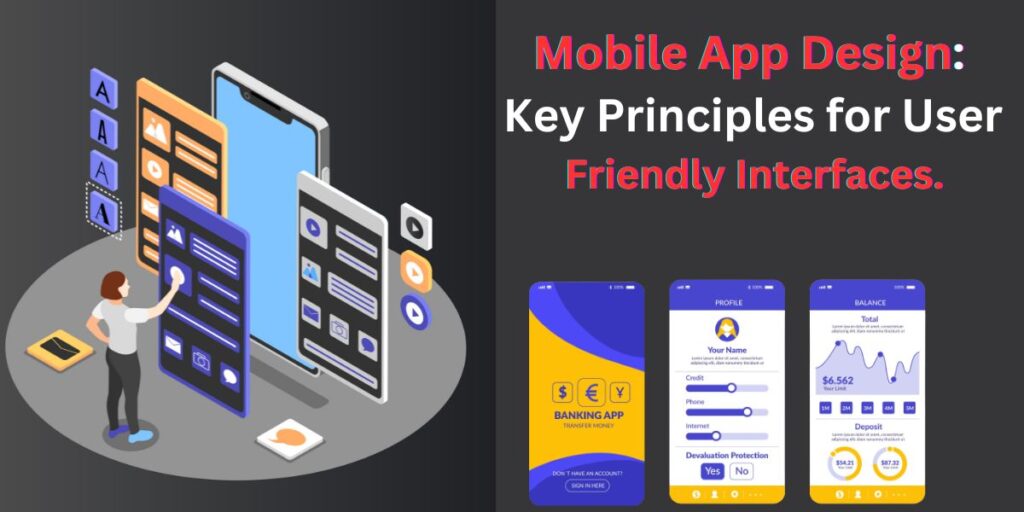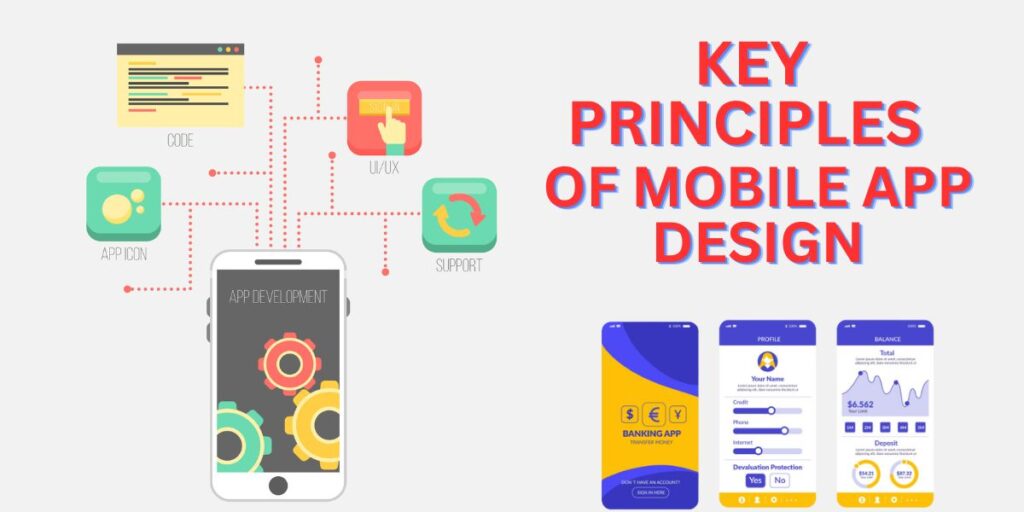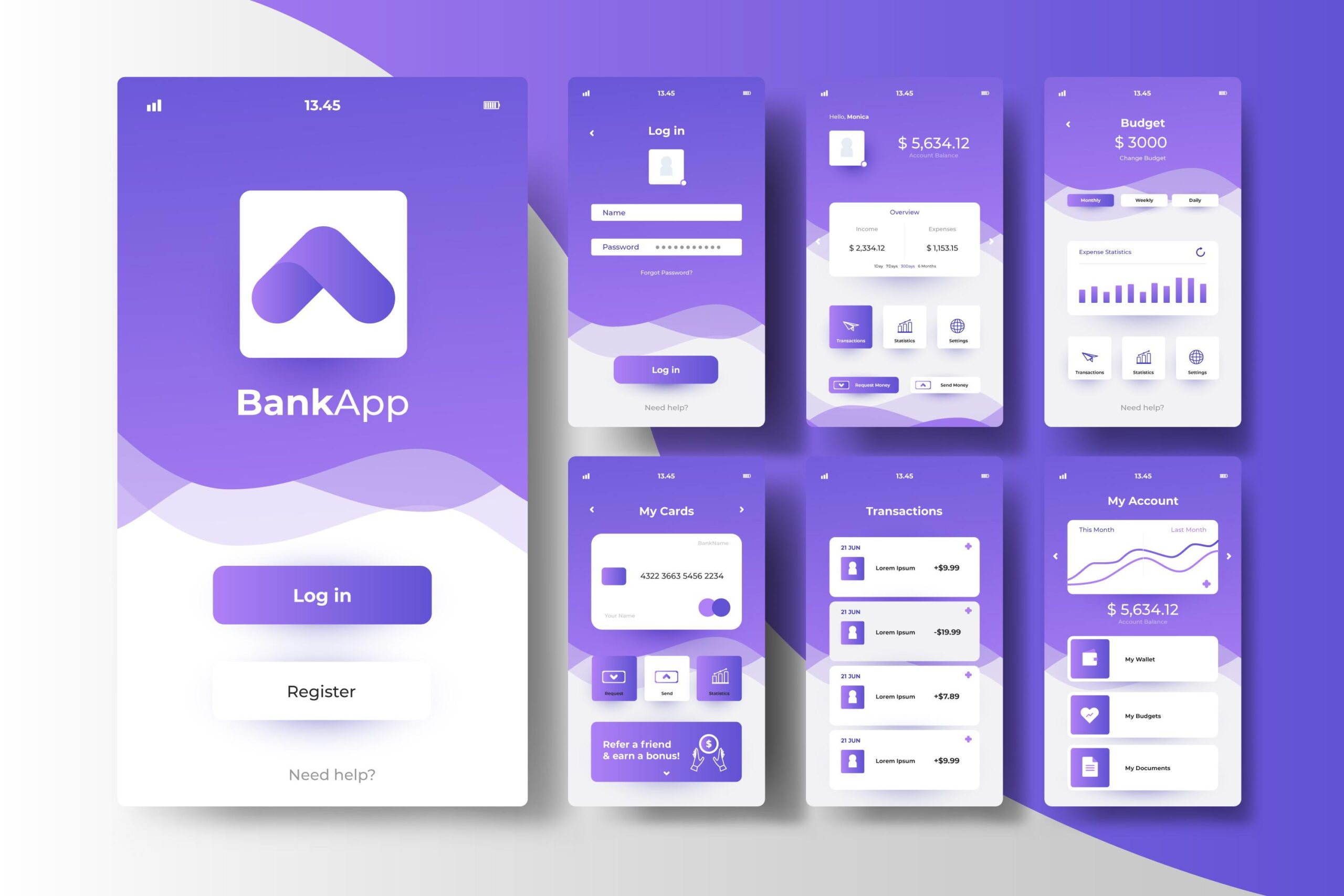In today’s fast-paced digital landscape, a well-crafted mobile app design can increase user engagement, as mobile apps have become an integral part of our lives. From managing your finances to managing your finances, there’s an essential app for just about everything. Whether it is communication with people or entertainment through mobile apps. However, today the digital market is flooded with mobile apps. But what separates a successful mobile app from the rest is a great design.
Mobile App Design: Key Principles for User-Friendly Interfaces.
Mobile app design plays an important role in user customization, a mobile designer. Which not only engages users with the mobile app but also keeps them coming back for more.
In this article, we will dive deep into the ocean of mobile app design. We’ll try to delve into its key principles, trends, and best practices to help you build or build an engaging and effective app that resonates with your target audience. Also, you can get a better experience in locating an experienced mobile app designer as per your requirements.

In today’s scenario, mobile apps have revolutionized the way we interact with technology. Mobile apps have also become an integral part of our daily lives. Whether you need to check the weather, order groceries, or connect with friends, mobile apps provide great convenience and accessibility.
However, the success of a mobile app depends on its functionality, which is embedded in its design. A well-crafted mobile app design by a well-experienced app designer can make the user experience smooth and engaging. Thereby increasing user satisfaction and retention.
“Revolutionize User Experiences”:
Promote your web or mobile app with a Pro App Designer and earn money while helping you create intuitive and visually stunning mobile or web experiences for users around the world. So reach out now! So reach out now!
Understanding mobile app design-
Often a mobile user becomes curious about mobile app design. Mobile app design is the process of creating an attractive and user-friendly interface for a mobile application. This includes making various elements user-responsive, including improved layout, color scheme, typography, and navigation, to ensure that users can easily navigate the app. Mobile app design is designed by a skilled app designer keeping in mind the user experience and their functionality.
Importance of User-Centered Design-
User-centered design is the cornerstone of successful mobile app design. A skilled mobile designer involves designing with users’ needs and preferences at the forefront of the design process. Only by understanding the target audience and their problems can a successful designer create a successful app that determines the needs of the target user and provides value. User-centric design not only enhances user satisfaction but also fosters higher engagement, conversion rates, and brand loyalty. Along with this, it is also promoted by the users.
Key principles of mobile app design-
To design a successful mobile app by a skilled mobile app designer, some key principles are followed –
“Turn your network into a source of income. Join us for influential app design referrals.“

Frequent Customer visits-
Appropriate mobile app design keeps the user seamless to retain the users and guide them to their desired actions. So having a well-structured app layout with intuitive navigation is a must. Which ensures that users can easily find what they are looking for. Whether the user is making purchases, accessing information, or connecting with others through the app, a clear and responsive interface enhances the user experience.
Visual Appeal and Branding-
An app’s brand identity is defined by its visual elements, including its color palette, logo, and imagery. Visual branding promotes a consistent identity and reinforces the personality of the app. The attractive design also attracts the attention of the users and encourages them to use it further.
Navigational Fluidity-
The navigation of the mobile app should be intuitive and user-friendly so that the user can easily access the different sections of the app. Navigation menus and icons should be well-organized and easily accessible, allowing users to navigate the app’s features without confusion. The navigational fluidity of a mobile app can be well understood by a skilled mobile app designer.
Responsive Design-
In today’s multi-device world, responsive design is paramount. The app should adapt seamlessly to different screen sizes and orientations, to provide ease of use and convenience to the user on smartphones, tablets, and even wearable devices such as smart watches. Responsive design enhances user experience and accommodates the diverse preferences of users.
Micro-Interaction-
Microinteractions are subtle animations that occur when users interact with an app. Including small details, such as button animations or haptic feedback. Which adds interactivity and enjoyment to the user experience, making the app look more dynamic and engaging.
Typography and Readability-
Choosing the right typography provides readability user comfort and experience. Clear, legible fonts are easy to read, while the appropriate font size doesn’t strain users’ eyes. The consistency of typography throughout the app reflects a consistent design.
Incorporating high-quality imagery-
Images and graphics can convey information and emotion more effectively than text alone. High-quality imagery relevant to the purpose of the app creates an engaging environment and connects with users on a deeper level.
Embrace Minimalism-
Less is often more in mobile app design. Adopting a minimalist design approach involves decluttering the interface, focusing on essential elements, and removing unnecessary distractions. This streamlined approach increases user focus and simplifies navigation.
Use of Color Psychology-
Colors evoke emotion and influence user behavior. By taking advantage of color psychology, designers can create specific moods and associations within the app. However, it’s important to maintain a cohesive color scheme that’s consistent with the app’s branding and purpose.
FAQs-
Q1. What are the key principles of mobile app design for creating user-friendly interfaces?
Ans: Powerful versatile application configuration spins around standards like instinctive routes, steady visual components, responsive designs, clear typography, and significant utilization of varieties. These components add to an easy-to-use interface that upgrades the general client experience.
Q2. How important is responsive design in mobile app interfaces?
Ans: Responsive design is crucial for mobile app interfaces as it ensures that the app functions and looks well on various screen sizes and orientations. This adaptability caters to a diverse range of devices, providing a seamless user experience and preventing usability issues.
Q3. Why is intuitive navigation essential in mobile app design?
Ans: Instinctive route guarantees that clients can undoubtedly travel through the application without disarray. Clear and recognizable route designs, for example, tab bars, menus, and signals, improve client commitment and lessen the expectation to learn and adapt, bringing about a more easy-to-use insight.
Q4. What role does color play in designing user-friendly mobile app interfaces?
Ans: Colors impact clients’ feelings and ways of behaving inside an application. A very much-picked variety range improves the stylish allure as well as helps in passing on data, featuring significant components, and making a reliable brand character. Nonetheless, an exorbitant or improper utilization of varieties can prompt visual mess and disarray.
Q5. How does typography impact the usability of mobile apps?
Ans: Typography affects the readability and accessibility of app content. Appropriate font choices, font sizes, line spacing, and contrast contribute to legibility. Reliable typography across the application guarantees a strong visual encounter, making it simpler for clients to consume content and explore through the connection point.



